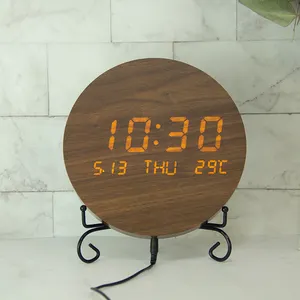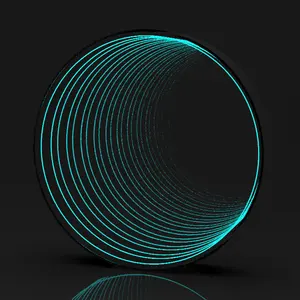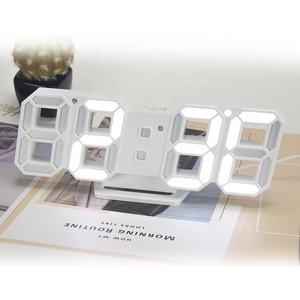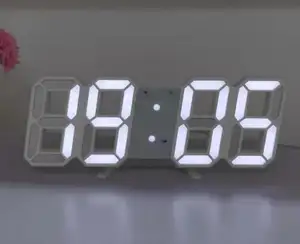An LED wall clock is a modern and stylish timekeeping device with LED (light-emitting diode) technology to display the time and, sometimes, additional information. LED wall clocks use energy-efficient LED lights to display the time numerically. The numbers are usually large and easily read, making the clock suitable for various settings. Depending on the model, LED wall clocks can offer additional features such as displaying the date, temperature, or even alarm functions.
Differences between 3D and digital LED wall clocks
3D LED Wall clocks use LED lights to create a three-dimensional effect. The numbers and clock hands appear to float or pop out from the clock's surface, creating a visual depth that adds an artistic and contemporary element to the clock. These clocks often have a sculptural or textured design, giving them a more decorative and eye-catching look. The emphasis of these clocks is on their visual appeal and artistic design. 3D LED wall clocks can display time in both analog (hour and minute hands) and digital formats, offering versatility in how time is presented. They are chosen for their artistic and visually captivating design and are often used as decorative pieces in homes and offices.
Digital LED wall clocks use LED lights to display the time numerically in a flat, digital format. The numbers and time are presented in a straightforward and easily readable manner. These clocks have a minimalist and functional appearance, focusing on clear time display without decorative or artistic elements. Digital LED wall clocks in large displays prioritize readability and practicality and display time exclusively in digital format, showing the hour and minute numerals. They are commonly used in settings where accurate timekeeping is crucial, such as offices and public spaces.
Setting up an LED wall clock
Tools and Materials Needed: modern LED wall clock, batteries (if required), wall mounting hardware (if not provided with the clock), and a screwdriver or power drill (if wall mounting hardware is needed).
Unbox the LED wall clock and inspect it for any visible damage or missing parts. Ensure that the clock is in working condition. If your LED wall clock is battery-operated, open the battery compartment, insert the required batteries, and ensure the batteries are properly aligned. If the clock is powered by an electrical cord, plug it into a standard wall outlet. Ensure the cord is not damaged and the outlet is in good working condition.
If the clock has digital time settings, use the buttons or controls provided to set the correct time. Follow the manufacturer's instructions for adjusting the time settings. For analog LED wall clocks, manually set the clock to the correct time by adjusting the hour and minute hands, if applicable. For accuracy, some large LED wall clocks might require a measuring tape to ensure proper placement. If your clock includes wall mounting hardware, follow the manufacturer's instructions to attach it securely. Typically, this involves drilling holes and using anchors and screws. Hang the clock securely on the mounting hardware or hook.









































 浙公网安备 33010002000092号
浙公网安备 33010002000092号 浙B2-20120091-4
浙B2-20120091-4